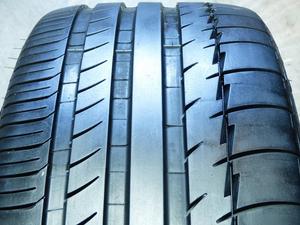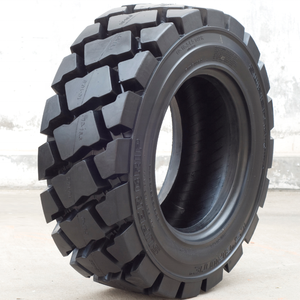(538 products available)


































































































































































































12x16.5 tires are often used in applications that require high traction and durability. There are several types of 12x16.5 tires, including:
All-Terrain Tires
These tires are designed to operate on and off the road. They feature an aggressive tread design that offers excellent traction on various surfaces, including mud, rocks, and pavement.
Mud-Terrain Tires
These types of tires are specifically designed for off-road use, especially in muddy terrains. They have large, widely spaced tread blocks that provide exceptional grip in deep mud. However, their on-road performance is inferior to that of all-terrain tires.
Rough Terrain Tires
These tires are designed for use in industrial and construction applications. They feature robust construction and deep tread patterns that provide stability and traction on uneven ground, gravel, and other challenging surfaces.
Skid Steer Tires
These tires are designed for skid-steer loaders. They come in different varieties, including solid, pneumatic, and turf tires. Skid steer tires are crucial for construction and landscaping projects, providing the necessary traction and stability on various surfaces.
Forklift Tires
These tires are specifically designed for forklifts. They are an essential component of material handling equipment, providing stability, durability, and traction in warehouses and other industrial environments. Different types of forklift tires are available, including solid and pneumatic tires.
12-16.5 tires are usually specified by using the following calculation, which gives the exact measurement of the tires.
There are a few other important specifications to keep in mind when considering the 12-16.5 tire size:
12-16.5 tires are often used on industrial and construction equipment, such as forklift trucks and telehandlers. They are also used on some agricultural implements.
There are a few things to remember when maintaining 12-16.5 tires:
By following these simple tips, maintaining 12-16.5 tires is easy. Properly cared-for tires will enhance safety, reduce operating costs, and improve overall vehicle performance.
Choosing the right 12x16.5 tire for a particular use case is critical. Here are some important factors to consider when buying 12x16.5 tires:
Understand the vehicle's requirements
This is the first step in choosing the right 12x16.5 tire. Business owners and operators of commercial vehicles should carefully read the owner's manual or consult the manufacturer's advice. This ensures that they stay within the recommended guidelines. Additionally, understanding the vehicle's needs also includes understanding driving habits, load-carrying capacities, and road conditions.
Tread patterns
Tread patterns are essential components of tires that provide grip, traction, and handling. The type of tread design influences how the tire performs in various situations. For example, all-terrain tires feature a balanced tread design. This provides sufficient traction on and off the road. They are well-suited for vehicles that regularly transit diverse landscapes.
Load rating and carrying capacity
A tire's load rating refers to the maximum weight it can carry when adequately inflated. It is represented by a number and letter code on the tire sidewall. When selecting tires, ensure that the unit's load rating equals or exceeds the vehicle's load requirements. This guarantees safety and optimal performance. Additionally, consider the carrying capacity concerning payloads in commercial applications.
Tire construction
Tires are an essential part of a vehicle that enables it to drive on different terrains. Tires are made of rubber and come in different types. The type of tire directly affects the vehicle's handling, ride comfort, and fuel efficiency. In most cases, there is a trade-off between the different types of tires. For instance, some types may provide superior grip but at the expense of increased rolling resistance.
Road conditions and weather
Weather and road conditions play a crucial role in tire selection. In areas with extreme winters, like heavy snowfall and ice, equipping the vehicle with tires explicitly designed for winter is essential. Winter tires have a softer rubber compound and unique tread patterns. They provide maximum grip on frozen surfaces. Conversely, all-season tires are well-suited for regions with mild winters and average precipitation.
Replacing 12 16.5 tires is a straightforward process that can be done with the right tools and safety precautions. Here is a step-by-step guide for DIYers:
Prepare the Vehicle
Park the vehicle on a flat, stable surface. Engage the parking brake and gather all the necessary tools, including a jack, jack stands, lug wrench, and new tires. Loosen the lug nuts slightly while the tire is still on the ground.
Lift the Vehicle
Place the jack under the vehicle's recommended jacking points and lift it until the tire clears the ground. Then, secure the vehicle with jack stands.
Remove the Old Tire
Fully remove the lug nuts and carefully take the old tire off the wheel hub.
Mount the New Tire
Lubricate the tire bead and the wheel rim's contact point. Then, place the new tire onto the wheel, ensuring it is properly seated.
Inflate the New Tire
Connect an air compressor to the tire's valve stem and inflate it to the manufacturer's recommended pressure. Check for any leaks or irregularities.
Reinstall the Wheel
Tighten the lug nuts by hand, lower the vehicle, and use a torque wrench to tighten the nuts to the specified torque. Lower the vehicle, remove the jack stands, and fully tighten the lug nuts.
Check the Tire Pressure and Alignment
After replacing the tire, measure the tire pressure using a gauge and adjust it if necessary. After changing the tire, check the vehicle's wheel alignment to ensure that it is correct.
Q: What does the tire size 12x16.5 mean?
A: The 12x16.5 tire size indicates that the tire has a 12-inch nominal width and a 16.5-inch diameter of the rim it fits. The measurement system used for this tire size is the imperial system, which uses inches.
Q: What are 12x16.5 tires used for?
A: 12x16.5 tires are commonly used for off-road and rugged terrains, such as in construction, mining, and agricultural equipment like tractors and skid-steer loaders.
Q: Are 12x16.5 tires suitable for on-road use?
A: While 12x16.5 tires are primarily designed for off-road applications, some all-terrain and general-purpose tires can perform adequately on paved roads. However, their performance and ride comfort on-road may not be as good as on-road-specific tires.
Q: How long do 12x16.5 tires last?
This depends on several factors, including the type of tire, usage, maintenance, and environmental conditions. Typically, 12x16.5 tires can last between 2,000 and 8,000 hours of operation or until the tread wear limit is reached. However, some high-performance and premium-quality tires may have longer durability than standard and budget-friendly tires.
Q: How to choose the right 12x16.5 tire for specific needs?
To select the proper 12x16.5 tire, consider the following factors: